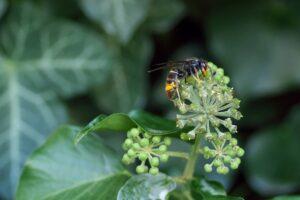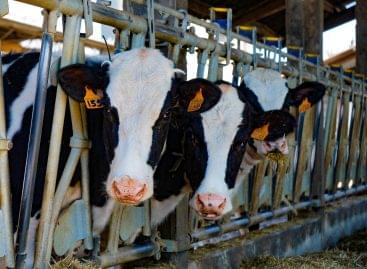A device developed in Hungary helps to slow down the spread of the Asian horse wasp in Hungary
A Hungarian-developed tool helps to slow down the domestic spread of the Asian horse wasp: this summer, individuals of the invasive wasp species coming from Europe were observed in Hungary for the first time – the Hungarian University of Agriculture and Life Sciences (MATE) informed MTI on Friday.

(Photo: Pixabay)
As you can recall, the invasive Asian horse wasp (Vespa velutina nigrithorax) has been on the European Commission’s list of invasive species since 2016, and its first Hungarian individuals were found in August in Kimlé, a settlement near Mosonmagyaróvár. The investigations related to the species were started by the beekeeping research staff of the Festetics Bioinnovation Group belonging to the Institute of Genetics and Biotechnology of the MATE, under the leadership of senior scientific worker Balázs Kolics. Based on the sequencing of six specimens and molecular genetic tests, they confirmed the suspicion that the species came to our country from Europe, and also started the creation of a gene bank, since in the long term, if the wasp species spreads, a lot of valuable genetic information will be traceable using this, the announcement states.
The Asian horse wasp is an agricultural pest
Two-thirds of its food comes from honey bees (Apis mellifera), and it takes roughly 12 kg of insects to create a nest, which means that a significant decrease in the number and diversity of the affected insect fauna can be expected. In its statement, MATE emphasizes that the scientific consensus highlights the need to remove the nest, and one of the most effective ways to do this is radio telemetry, which was first used in 2018. The first nest in Hungary was found using this method by Dutch and Belgian wasp trapping contractors commissioned by the National Hungarian Beekeeping Association (OMME). MATE’s experts found the nest about an hour and a half later, completely independently of the Dutch-Belgian company’s system, with a YUPITERU MVT-7100 radio scanner, a self-made antenna, and the Dessau 260 mg transmitter mounted on the wasp, i.e. the Hungarian experts succeeded in using the domestic radio telemetry system to build from scratch in one month. In the past period, a Hungarian-developed transmitter was also developed in cooperation with Richárd Wohlfart, an employee of the Budapest University of Technology, the announcement states. Balázs Kolics emphasizes in the announcement that there is currently no alternative to finding and removing the nest, so the goal is to make radio telemetry technology available as cheaply as possible. The primary target area for this is beekeeping, and the secondary is viticulture and fruit growing, as they are the key players in the detection of the Asian horse wasp, he adds.
In its announcement, MATE highlights that the population of the European Vespa velutina horse wasp has grown to such a large number and extent that it can reappear at any time in more distant Central and Eastern European locations, and the risk of its permanent establishment must be taken into account.
Klára Petrovicsné Mátyás Kinga and Éva Kolics-Horváth from the MATE Georgikon Campus and Tamás Sipos from the MATE Kaposvári Campus participated in the research. Josef Mayr (AGES, Austria) and Sophie Kratschmer (BOKU, Austria) took part in the research as foreign experts, and 18 volunteer beekeepers from Hungary, Slovakia and Austria helped with the field work. In the field of radio technology, József Hosszú and Richárd Wohlfart worked with specialists and are currently working together, the announcement states.
MTI
Related news
Domestic fruit production fell sharply in 2025, while producer prices plummeted
🎧 Hallgasd a cikket: Lejátszás Szünet Folytatás Leállítás Nyelv: Auto…
Read more >Chamber of Agriculture: 10 percent more new wine was produced this year than last year
🎧 Hallgasd a cikket: Lejátszás Szünet Folytatás Leállítás Nyelv: Auto…
Read more >Bóly Plc. has developed a technology for breeding cattle capable of producing premium quality milk.
🎧 Hallgasd a cikket: Lejátszás Szünet Folytatás Leállítás Nyelv: Auto…
Read more >Related news
Fidelity Kitekintés 2026: Ne becsüljük alá az inflációt!
🎧 Hallgasd a cikket: Lejátszás Szünet Folytatás Leállítás Nyelv: Auto…
Read more >Company Trend 2025 – domestic businesses under strong pressure, in a negative trend
🎧 Hallgasd a cikket: Lejátszás Szünet Folytatás Leállítás Nyelv: Auto…
Read more >Surprising ordering statistics: foodora sampled the ordering habits of Hungarians in 2025
🎧 Hallgasd a cikket: Lejátszás Szünet Folytatás Leállítás Nyelv: Auto…
Read more >







